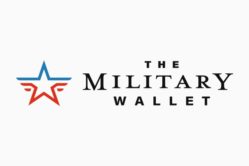I’ve been thinking a lot about my investment strategies. Currently, virtually all of my investments are in standard equities, such as stocks, bonds, and REITs.
By all outward appearances, my investment portfolio is diversified – I have various equities (large cap, small cap, domestic, international, emerging markets, etc.), various bonds, and some other things to balance it out.
The majority of my investments are held in retirement accounts, and I have a strong cash reserve (I feel it’s important for me to have a large emergency fund since I am self-employed).
But after speaking with several businessmen and investors I respect, I wonder if my investments are truly diversified?
What’s missing? The more I think about it, the more interested I become in investing for cash flow. Generating regular cash flow is the best way to create wealth, an area I have been neglecting with my investments.
Why Focus on Cash Flow?
There are many reasons I want to increase my cash flow, and most of it is financial flexibility. The more cash you have coming in, the more options you have – in terms of lifestyle, ability to weather an emergency or economic downturn, and to build an awesome war chest for future investments or business opportunities.
There are other benefits as well. Right now much of my wealth is concentrated in the stock markets, which are volatile compared to some other forms of investments. I know several people who had to postpone retirement when the markets crashed a few years ago.
I also lost a lot of money, which left a mark on me. Even though the markets and my investment portfolio have recovered, for the most part, I know this can happen again.
I want to diversify my investments beyond the traditional stock market; I don’t want similar events to the crash of 2008 to occur right before I’m ready to retire.
What is the Long-Term Outlook on Taxes?
The US has been running a massive deficit for well over a decade, and the long-term outlook says that somehow, someway, taxes must increase. When and how much are still to be determined, but I don’t see income taxes decreasing in the long run.
What does this have to do with cash flow? As I noted in the opening paragraph, much of my investments are tied up in retirement funds. This is great for the Roth account contributions, which were made with income that has already been taxed.
But I also have some traditional accounts in a Solo 401k which have not yet been taxed, but will be when I make the withdrawals in retirement age. If our tax rates continue to increase, then I may end up paying more in taxes than I could have paid now.
I still plan on maxing out my Roth IRA and making 401k contributions. But I also want to start looking outside of those investment vehicles.
Investing for cash flow is a long-term hedge against taxes, especially if I can continue making my retirement account contributions.
Investing for Cash Flow – A Few Options
There are literally thousands of ways to generate more cash flow, but not all of them are good for everyone. Lately, I’ve been focusing on a few of them.
Some examples include expanding my business, real estate, buying a traditional brick and mortar business, peer to peer lending, and dividend stocks.
Here are some of my thoughts on these investment opportunities, and why they may or may not be a good fit for me.
Real Estate
I’ve read tons of books on investing and becoming a millionaire, and almost all of the case studies came in two flavors: small business owner, or real estate owner.
I already have a small business, and as I’m not yet a millionaire, real estate looks like a good way to help me speed things up.
Real estate isn’t risk-free, but the current market offers many opportunities. Rental prices have gone up steadily in many locations since the bubble burst, largely because many people either can’t afford to buy a home or can’t qualify for a mortgage.
Again, this would require a lot of research and perhaps finding a mentor since I don’t know the first thing about being a landlord or managing a property. But I am intrigued by the prospect of owning an investment property.
I have known several people who used rental properties to either partially or fully fund their retirement. It takes work, but it can be a great way to build wealth.
Another option for those who want to invest in real estate who 1) don’t have the necessary capital, or, 2) don’t want to take on too much risk, is via companies such as Fundrise.
Fundrise allows individuals to invest in REITs. Partnering together with other investors, Fundrise customers are able to invest small amounts of money for equity in real estate investments.
You can learn more about Fundrise on their website.
Expanding My Business
As I mentioned, I am self-employed. My business is primarily web-based – I run several websites, do freelance writing, and I sometimes offer consulting services on various internet marketing topics. Expanding my business is always on my mind, and I recently acquired a few more domains to work in that direction.
But I don’t want to tie all of my income to one segment of the market (just as you don’t want all your investments in one stock).
I am looking at other ways to expand my business beyond adding new websites.
One area I am looking at is building apps for smartphones. This is complementary to what I am doing now but different enough that it doesn’t have the same inherent risks (though it does have a set of different risks).
There are many opportunities in this space, but this is also something that requires a ton of research on my end since I don’t know how to code.
In all likelihood, I would need to hire out the development of any apps I would produce. There are risks here, but I also see this as an opportunity to complement my current business model.
Buying a Traditional Brick and Mortar Business
I looked into buying into a franchise or other traditional business long enough to know that it probably isn’t for me at this time. Most small businesses require a full-time commitment, which is something I can’t do at this time.
I want to add cash flow, but not another full-time job. Buying a franchise can be a good way to generate wealth, but it often takes a few years of long hours to pay back the initial investment.
Peer to Peer Lending
This is another topic that excites me. P2P lending allows individuals to “be the bank” and make individual loans to borrowers who want to avoid taking a loan from a bank (here is a primer on peer to peer lending).
Basically, a group of individuals makes micro-loans to a borrower, who then makes one monthly payment. The P2P lending company manages the loans and distributes the payments to the investors.
There is a risk with these investments, but you can invest with as little as $25 in each loan, making it easier to diversify that risk.
Interest rates are often in the 6-10% range, which is a reasonable return on investment. The primary peer to peer lending companies are Prosper and Lending Club.
I invested money with these companies when they first opened, but I haven’t made any investments since my initial trial.
Right now I am thinking about putting a small investment into each of these platforms to compare them, then decide if I want to invest more money for the long run.
Dividend Stock Investing
Dividend stocks are proven to generate cash flow and there are a lot of benefits to investing with them. In addition to the quarterly or annual distributions, you have the opportunity to increase wealth through capital gains.
Earning cash and increasing your net worth with stock appreciation is normally a win-win situation. The problem is that it takes a large amount of money to generate meaningful income from dividend stocks.
Dividend payments in the 3-5% range are often realistic returns to aim for, and you can generate substantial holdings and dividend payments if given enough time.
M1 Finance for Dividend Stocks
Of all the brokerages available, my pick for purchasing dividend-producing stocks is M1 Finance.
While charging no trading fees, M1 allows you to invest in over 2,000 stocks, and more than 3,000 ETFs. The options are broad regarding dividend stocks and those zero-fee trades keep money in your portfolio.
Ramp Up Your Dividend Investing
You can speed things up by focusing your investments on companies that have consistently raised dividends (see Dividend Aristocrats for some examples of dividend stocks that have consistently increased dividends) and by reinvesting your dividends through DRIPs.
I love the idea of dividend investing, and I have a small amount of dividend-paying stocks in my investment portfolio. But I’m not sure this is where I will focus my immediate efforts on increasing cash flow.
The easiest way to increase your dividend holdings is by using DRIPs, which reinvests your dividends to buy more shares of stocks.
The compounding effect of DRIPs is great for long term cash flow, but it doesn’t do a lot for immediate cash flow. The other issue is the desire to move some investments out of the stock market.
Which Direction Will I go?
As with any investment, you need to go in with a plan, and mine is to diversify my current holdings and focus on cash flow.
I want to put my money to work for me, and the longer it sits there earning less than 1% interest in an online savings account, the more I feel like I am missing out on other opportunities.
That said, I’m not going to rush into anything. I want to make sure my investments meet my needs and have an acceptable level of risk and time commitment.
Based on the opportunities listed above, I think I will pass on buying into a franchise or other brick and mortar business. That is a time commitment I don’t think I am ready for.
Likewise, I will take a pass on the dividend stocks. Even though they offer relatively stable returns and an acceptable level of risk, I want to move more of my investments out of the stock markets.
Of the remaining opportunities, I think peer to peer lending will be the easiest to incorporate into my investing strategy. I am also intrigued by expanding my business and owning real estate.
I think I will start with the P2P lending, then branch out from there. The next area I will tackle will be expanding my business with app development. I would love to add cash flow from a rental property or two in the long term.
What are your thoughts on these investment ideas – are they logical, or flawed? Do you have positive or negative experiences with these investments? Any advice?



Comments:
About the comments on this site:
These responses are not provided or commissioned by the bank advertiser. Responses have not been reviewed, approved or otherwise endorsed by the bank advertiser. It is not the bank advertiser’s responsibility to ensure all posts and/or questions are answered.
Peter says
Being both an active investor on Prosper and Lending Club I would put more money in Lending Club they seem to have better qualified borrowers. The last 5-6 months (2016) i’ve been seeing an increase in defaults with my money in Prosper and my cashflow has been shrinking.
Tommy Walters says
Hey Ryan!
Thanks for the article! It is well written with great ideas. I also like that it invites us into your story while at the same time helps us to process through various applicable strategies that we should consider.
Super interesting that you mentuon mobile app development. You should check out a company called BuildFire. They’re a no coding required app platform that has a fully white labeled resller option. I’ve used them for a while now and have made solid cash flows from it. I think it’d be right up your ally.
Thanks again! Love the articles. Keep them coming! 🙂